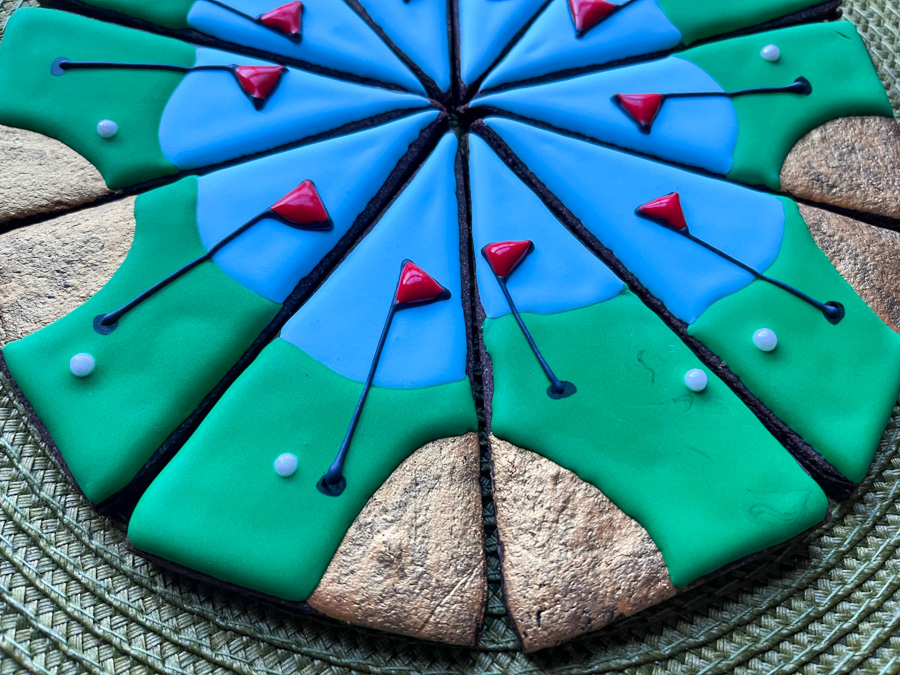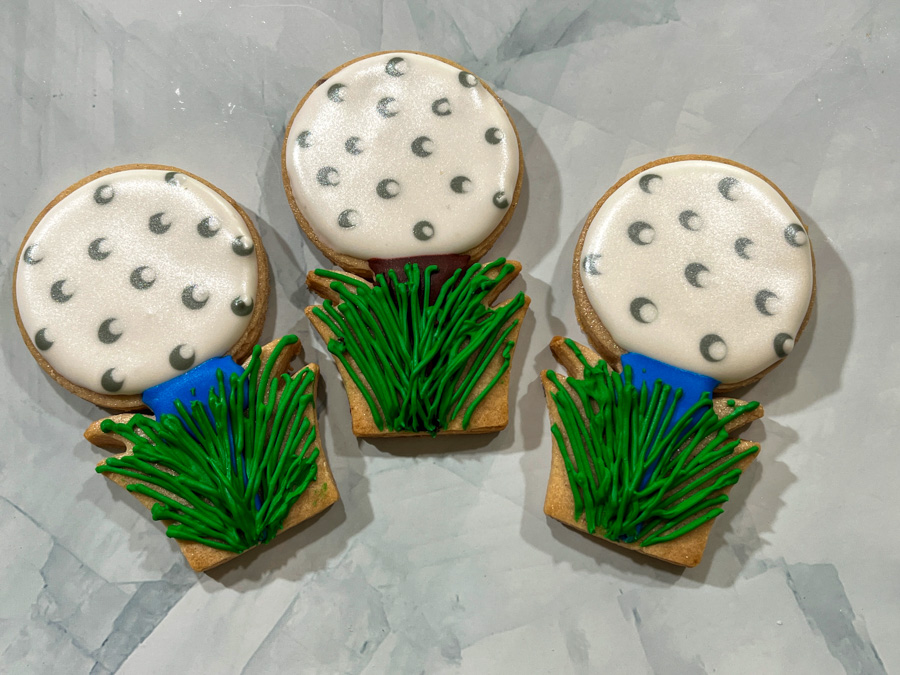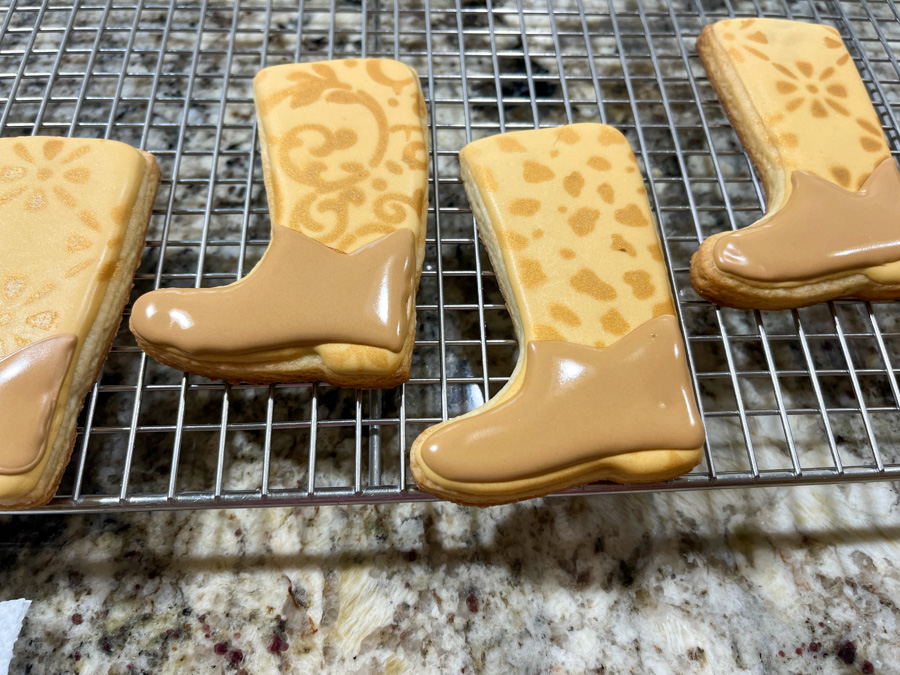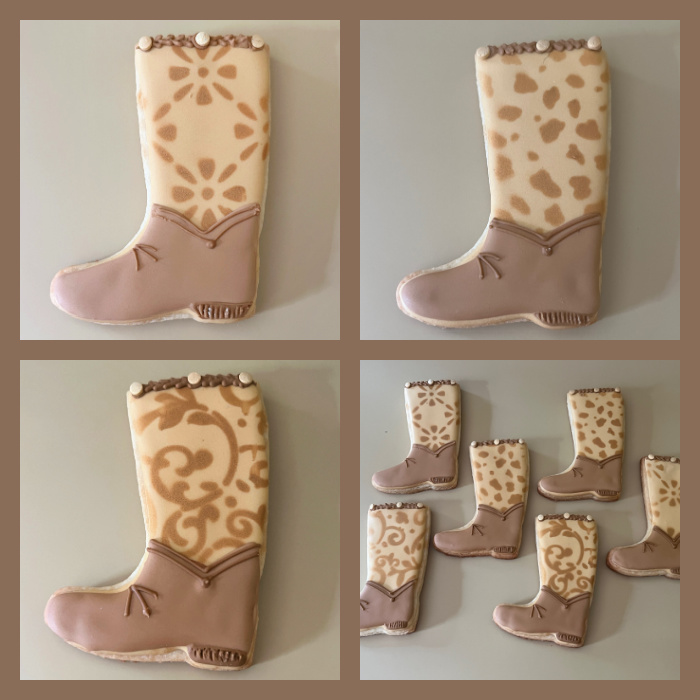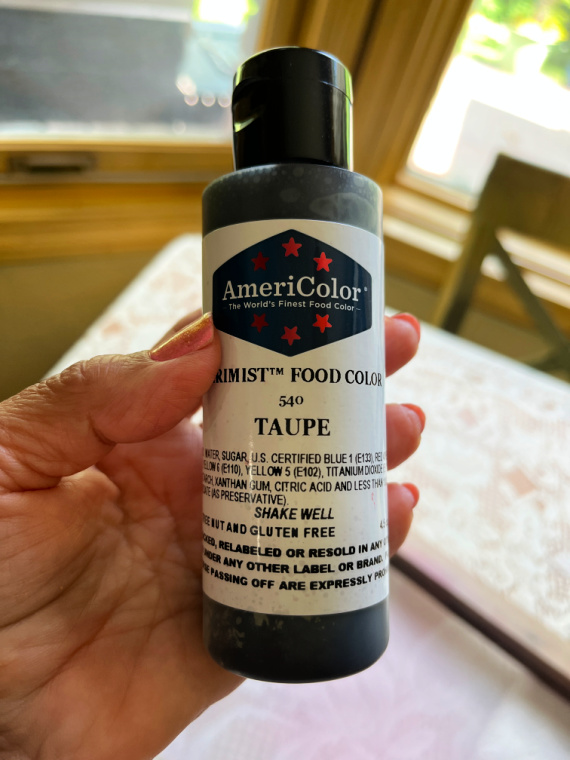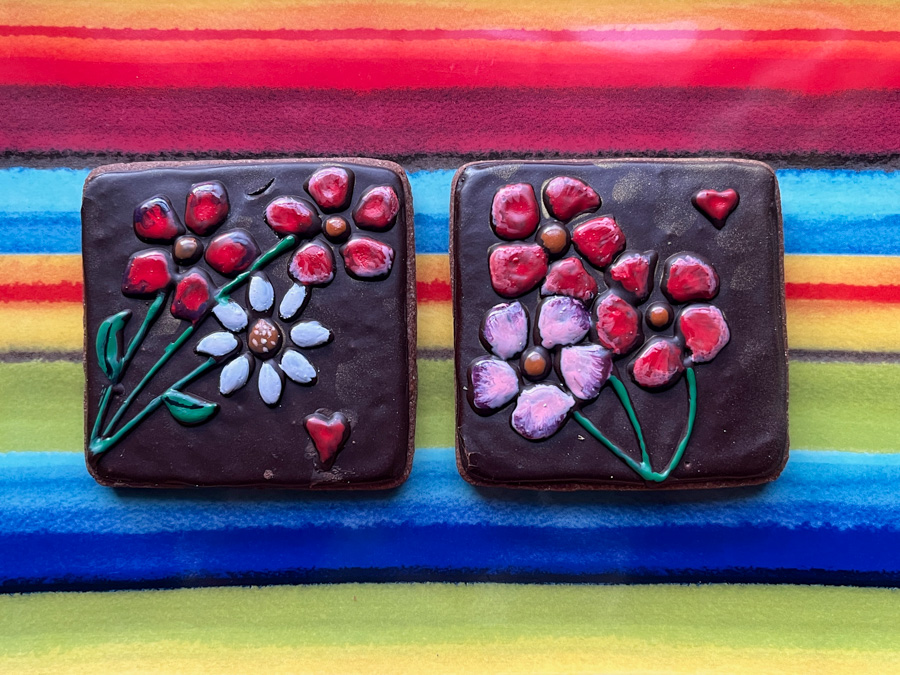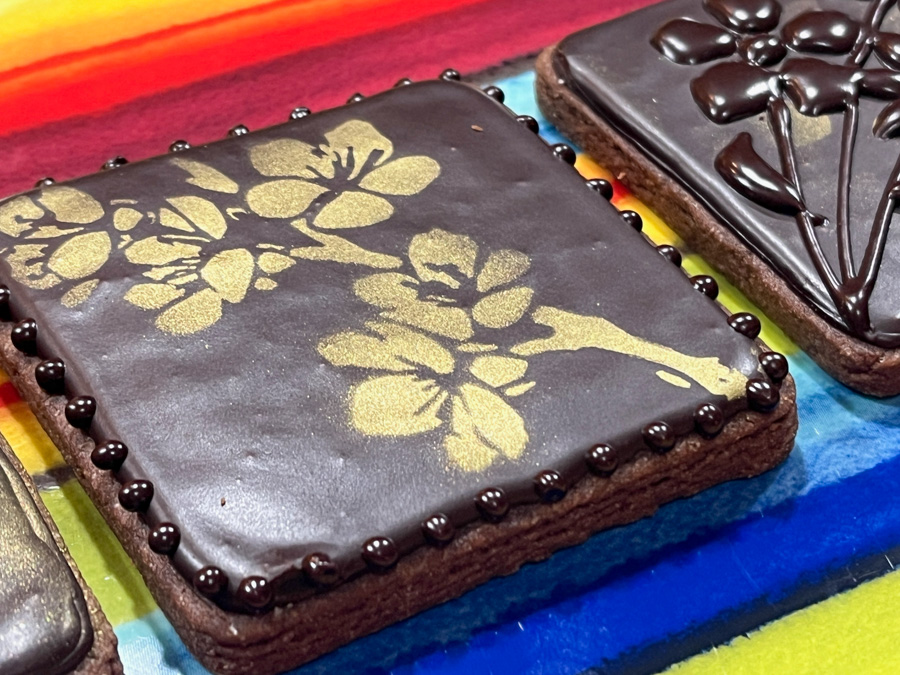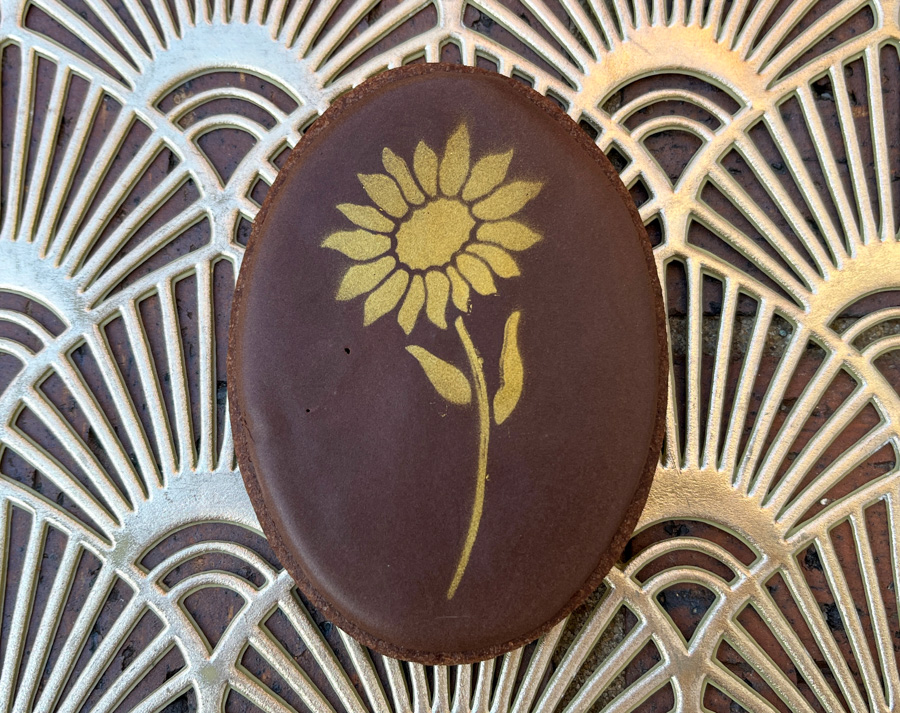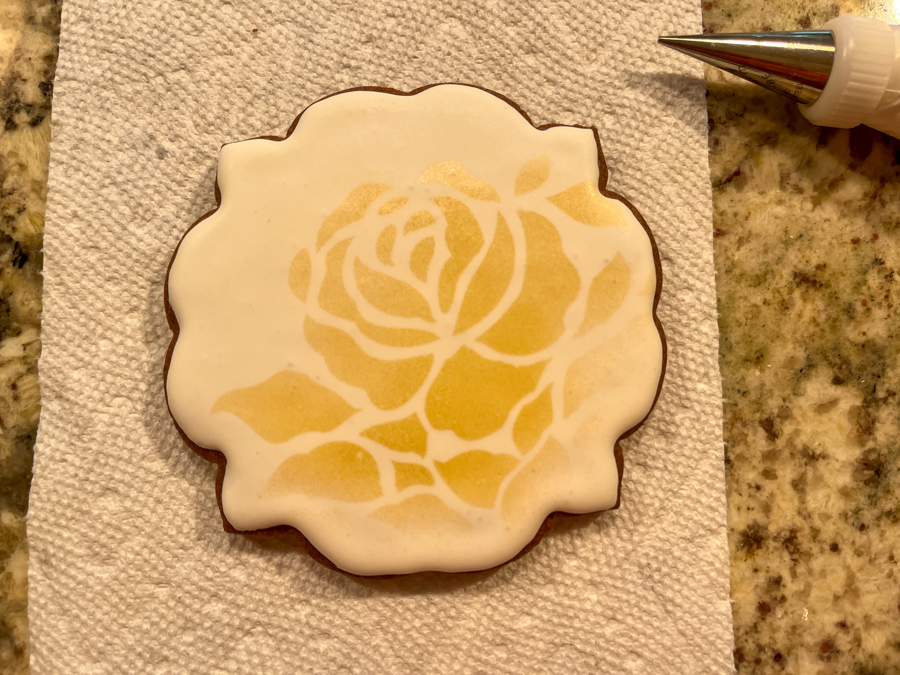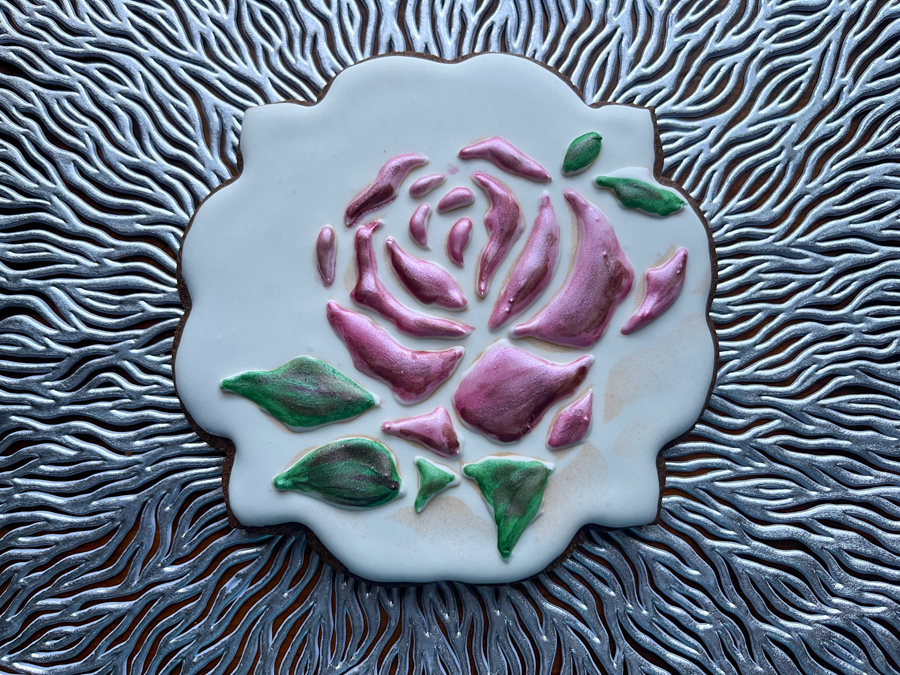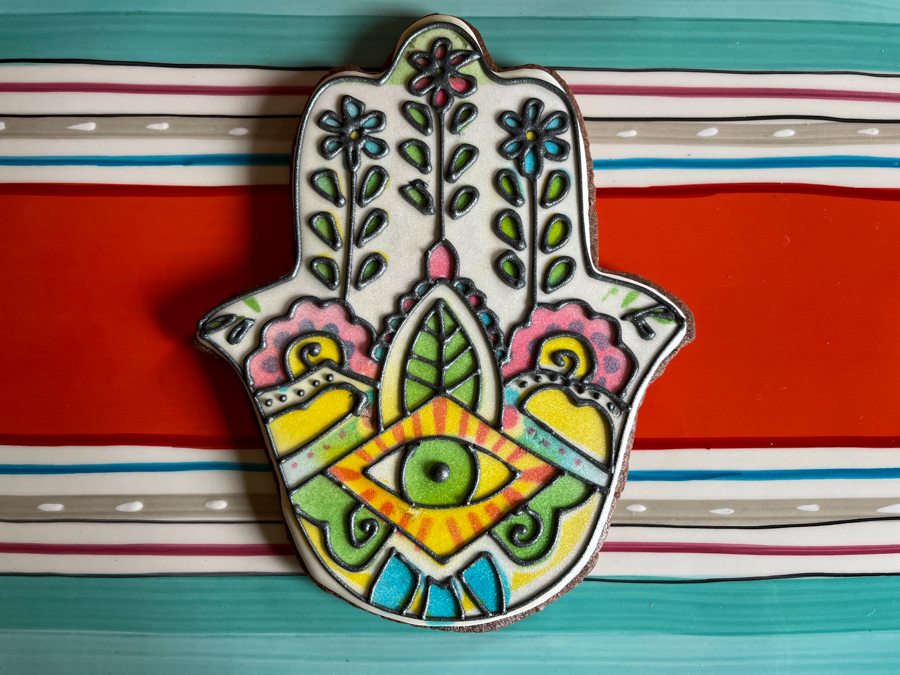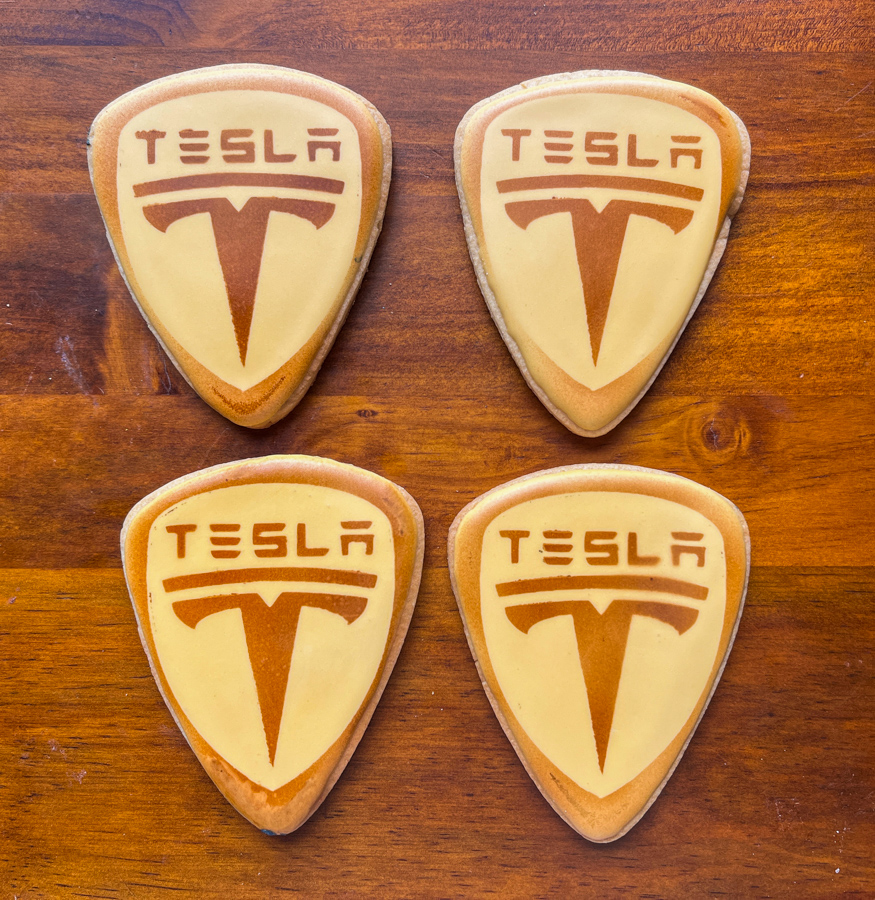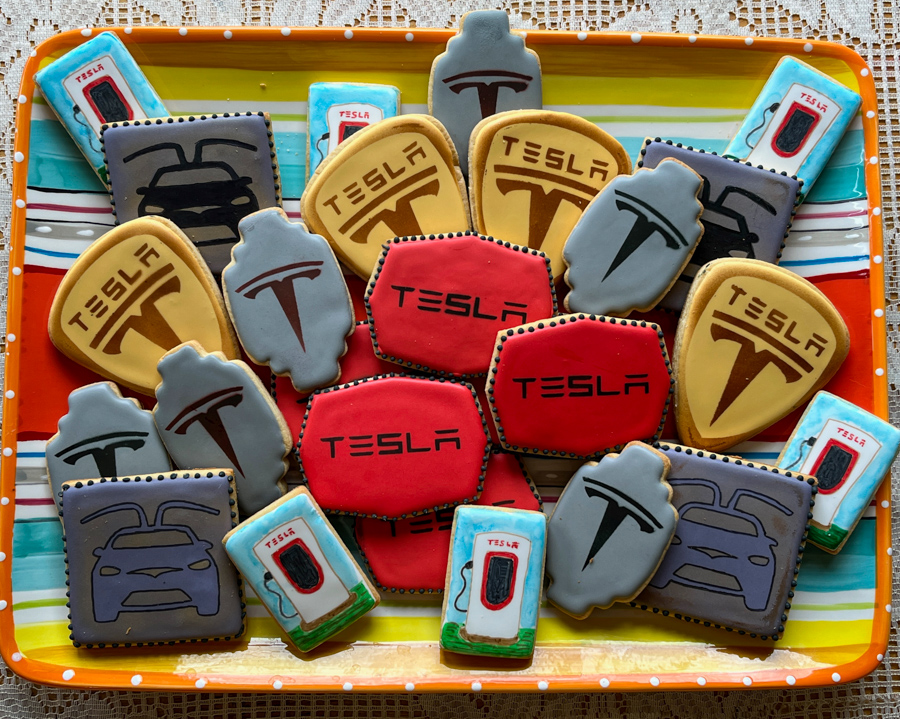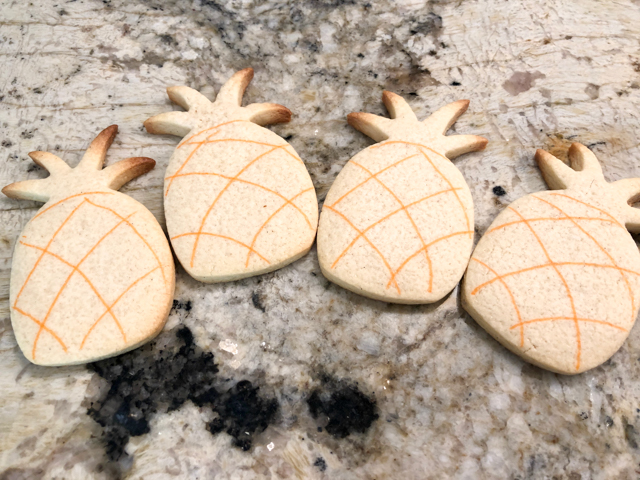Last week Haniela demonstrated a super cool method to decorate cookies with snowflakes, relying on Royal icing transfers (replay available here, in the live you can get links for the templates, or you can make them yourself). All you need to do is pipe the snowflakes, let them dry overnight, then paint them with an air-brush, which is of course optional. I actually made a set with them white, just sprayed with PME luster. So. Much. Fun. You HAVE to try this.

Aren’t they cool? Keep in mind snowflakes might be perfect when they are formed but once they fly around a bit and hit the ground, they won’t be perfect anymore. Did you see where I’m going? (wink, wink). So, first thing is to pipe them and use the air-brush in a vertical position to direct the spray exactly where you want it. Just a few drops in the little container, not more. Otherwise you cannot keep it vertical. I learned that trick from Haniela’s live which you can watch clicking here.
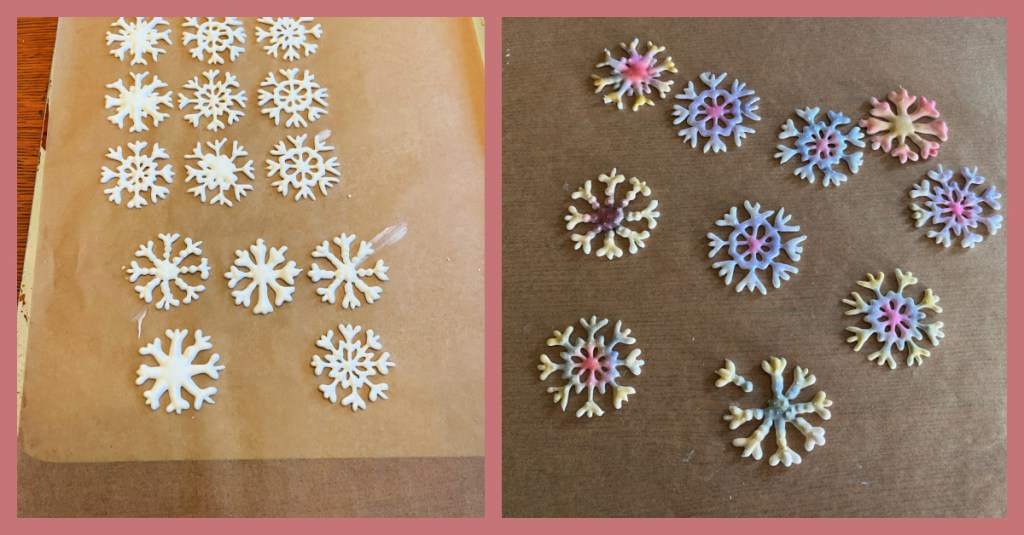
I hope you will notice that one of them broke after I painted. Haniela showed you can still use them, and I did just that. When you add the flake to the cookie, just place the broken bit right in its place, and allow the icing to set. Nobody will notice. You can see below all the steps to making these cookies, including the cosmetic surgery step.

I also loved the white on blue…

The bead border is again optional, but it always seem to elevate the look of a cookie, make it more polished. Plus, it is a nice thing to practice. I used to be absolutely scared of it.

Some of the flakes turned out better than others, but let’s pretend some of them just flew longer and hit the ground harder…

Hani, thank you so much for this live, I now feel much more confident handling the air-brush, this was a real game-changer for me.
ONE YEAR AGO: Molded, Stamped, Rolled
TWO YEARS AGO: Baby Blue, from Me to You





